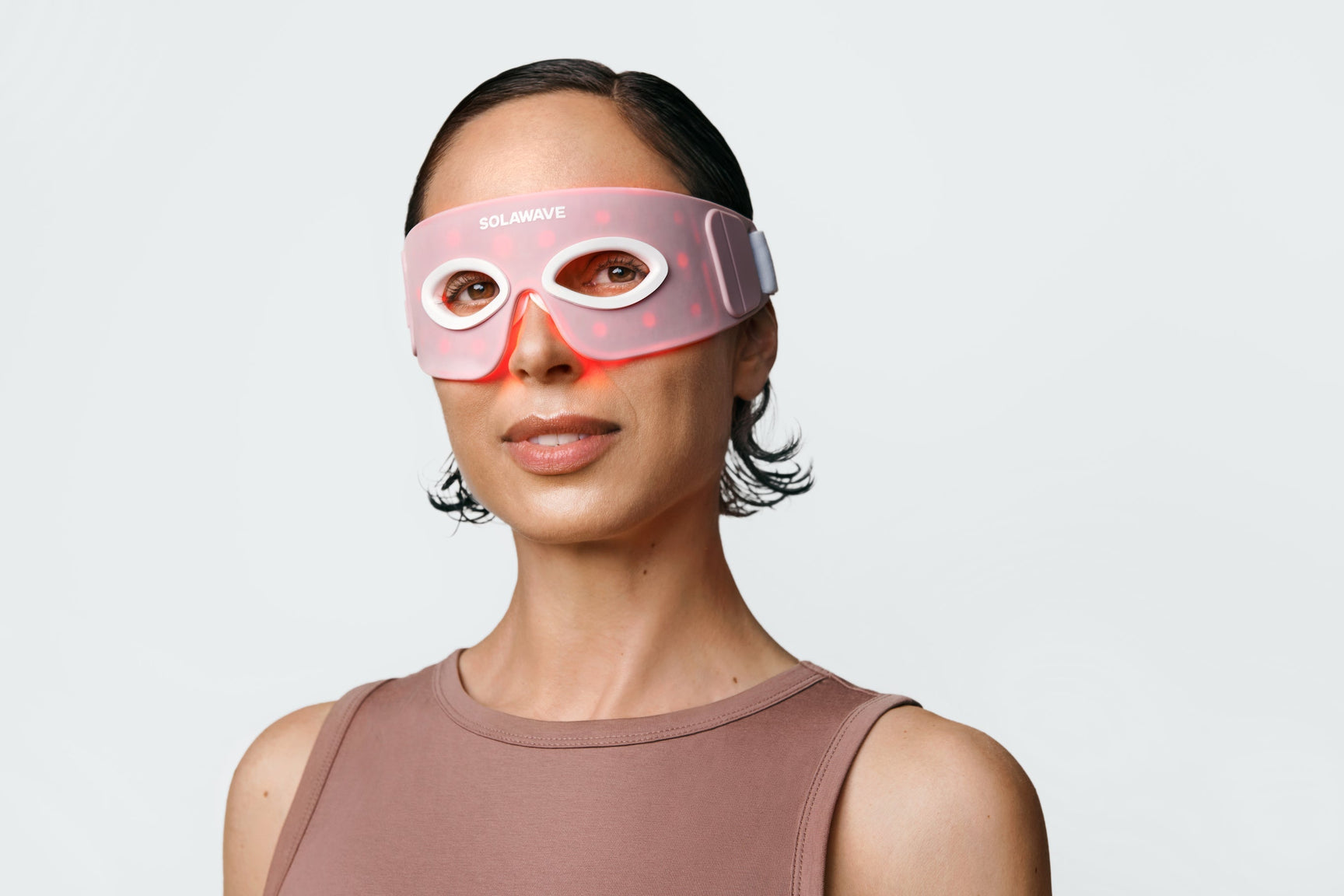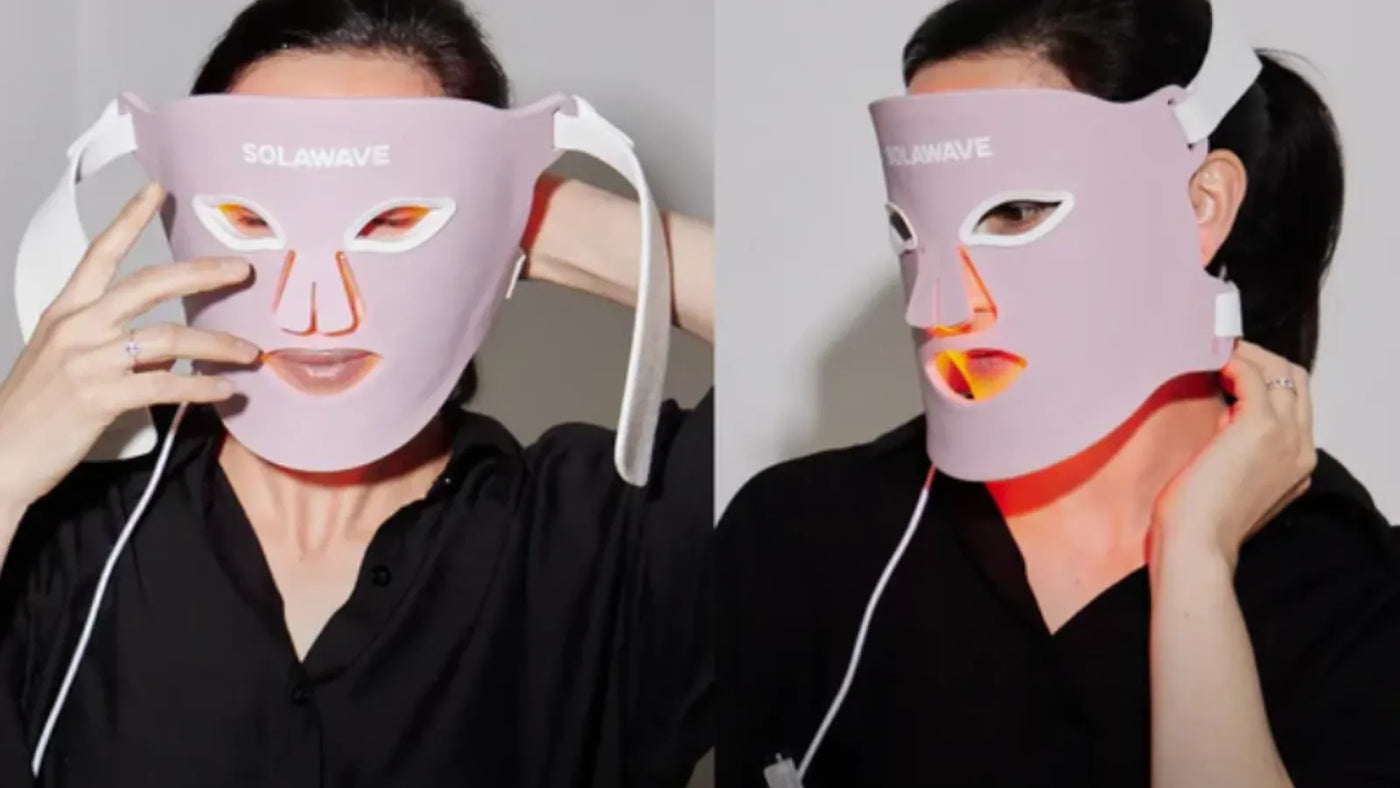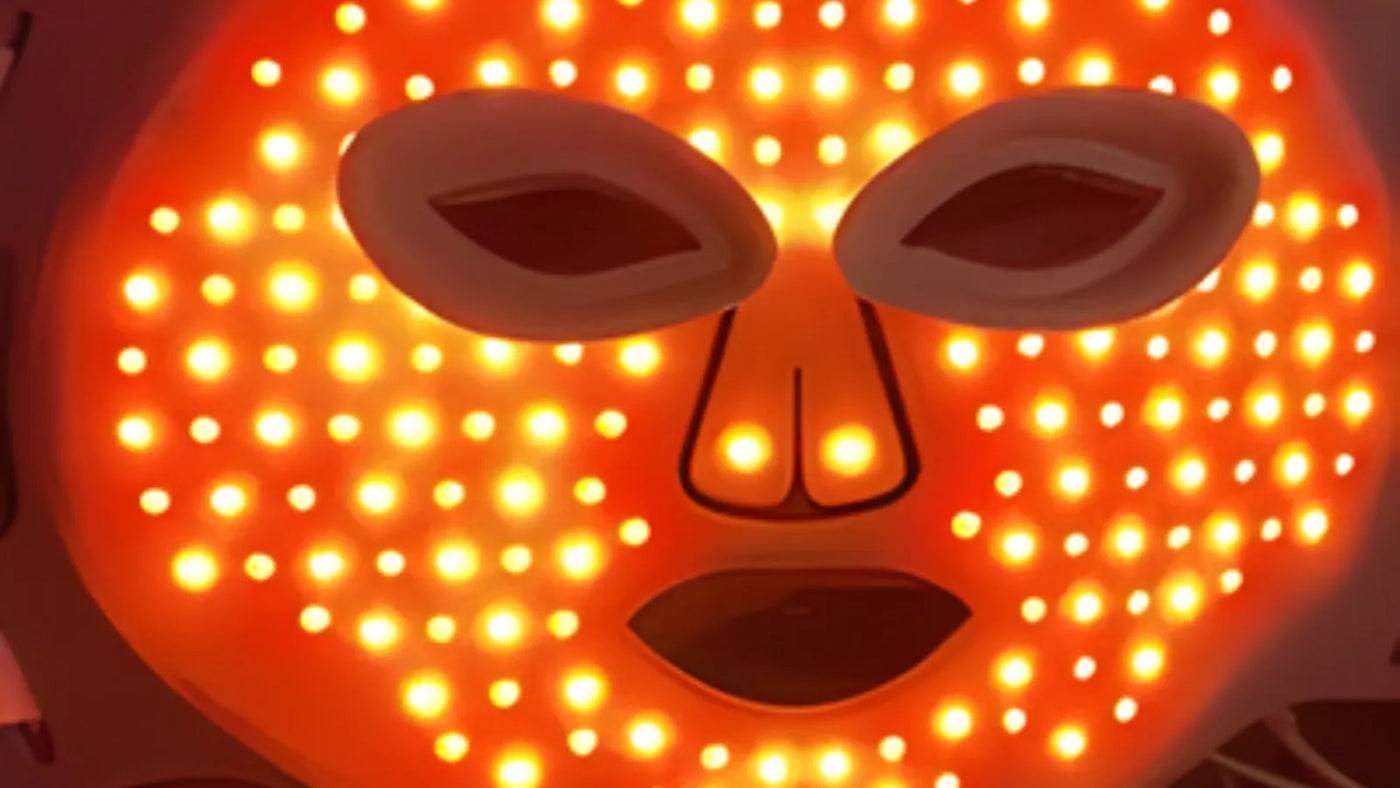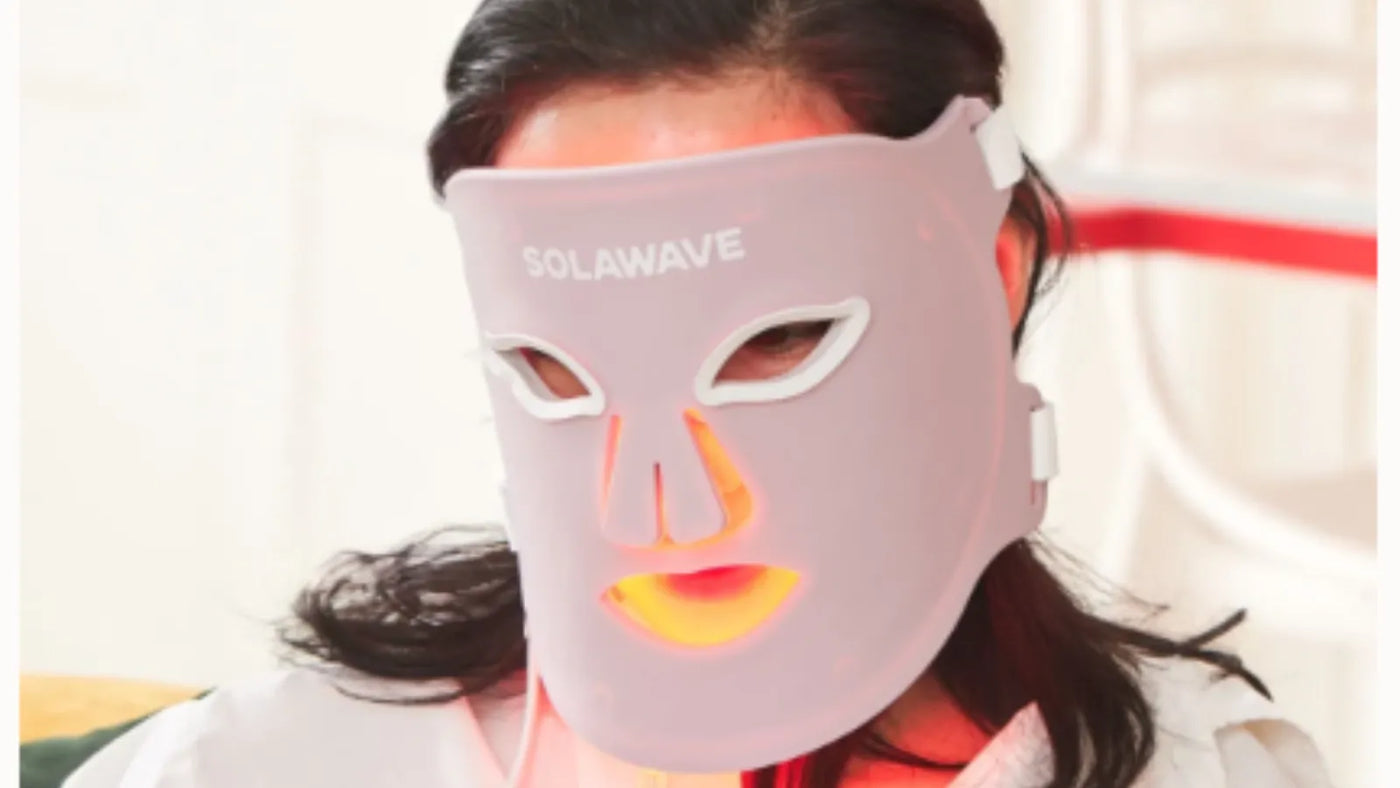

Low-Level Laser Therapy Vs Red Light Therapy: What's The Difference?
Light Therapy has quickly become a sought-after addition to skincare and wellness routines, thanks to its ability to visibly rejuvenate skin and support a healthier-looking complexion. As more people explore these innovative treatments, there’s often confusion about the differences between Low-Level Laser Therapy (LLLT) and Red Light Therapy.
While both approaches use light to enhance the appearance of your skin, they rely on distinct technologies that differ in exactly how they work.
What Is Low-Level Laser Therapy?
Low-Level Laser Therapy (LLLT) is a specialized technique that utilizes focused laser energy to influence cellular activity in the skin and underlying tissues. Unlike Red Light Therapy, which relies on LED bulbs to emit a broad spectrum of light, LLLT employs laser diodes that generate a single, coherent wavelength. This concentrated beam allows for precise targeting of specific areas, making LLLT a distinct modality within the broader field of light-based treatments.
How Does Low-Level Laser Therapy Work?
LLLT operates within the red and near-infrared spectrum, typically using wavelengths between 600 and 110 nanometers. The defining characteristic of LLLT is its use of coherent light — meaning the light waves are aligned and travel in the same direction. This coherence enables the laser to penetrate deeper and deliver energy more efficiently to targeted tissues.
When the laser is applied to the skin, the energy is absorbed by cellular components, particularly the mitochondria. This interaction is thought to enhance cellular metabolism and promote physiological processes that support tissue repair and renewal. The focused nature of the laser allows practitioners to address specific areas with a high degree of accuracy.
LLLT is typically administered in professional settings, such as dermatology clinics or wellness centers, where practitioners can calibrate the device for precise application. Sessions are generally brief and do not require anesthesia or downtime.
Common Uses and Key Benefits of Low-Level Laser Therapy
Low-Level Laser Therapy is widely utilized across medical, wellness, and aesthetic fields for its ability to influence cellular activity and promote tissue repair. Its applications extend well beyond skincare, making it a versatile tool for a range of goals.
Common uses of LLLT include:
-
Addressing localized redness, irritation, or inflammation
-
Assisting in the visible reduction of acne-related inflammation and scarring
-
Promoting healthy hair growth and managing hair loss on the scalp
-
Accelerating wound healing and tissue repair following injury or surgery
-
Managing joint pain, muscle soreness, and inflammation
-
Supporting recovery from sports injuries, including strains, sprains, and tendonitis
-
Reducing discomfort and improving mobility
-
Enhancing circulation and reducing swelling in targeted areas
The key benefits of LLLT are rooted in its precision and depth of penetration. By delivering focused laser energy directly to specific tissues, LLLT can stimulate cellular metabolism, enhance blood flow, and promote natural healing processes. This makes it a preferred option for individuals seeking targeted, professional-grade results in both medical and cosmetic settings.
What Is Red Light Therapy?
Red Light Therapy is a non-invasive skincare treatment that uses specific wavelengths of visible red and near-infrared light to support the appearance of healthier, more radiant-looking skin. Unlike Low-Level Laser Therapy, which uses focused laser beams, Red Light Therapy relies on medical-grade LEDs to deliver gentle, diffused light across the skin’s surface. This approach allows for broader coverage and is well-suited for at-home use as well as professional treatments.
How Does Red Light Therapy Work?
Red Light Therapy operates within the red and near-infrared spectrum, typically using wavelengths at 630 nanometers for Red Light, 660 nm for Deep Red Light, and around 830 nanometers for Near-Infrared Light. Amber Light Therapy, another form of Light Therapy, uses wavelengths in the nearby range of 605 nm to address specific skin concerns like uneven tone and puffiness.
-
Red Light Therapy is renowned for its ability to penetrate the skin painlessly and non-invasively to support healthy collagen production, which helps directly reduce the appearance of fine lines and wrinkles.
-
Deep Red Light Therapy targets visible signs of aging and promotes visible skin rejuvenation by reaching the dermis, the deeper layer of the skin. This wavelength is known for supporting healthy collagen production, which helps maintain a look of firmness in the skin.
-
Near-Infrared Light Therapy penetrates even deeper, supporting a look of overall radiance and so the skin appears luminous and refreshed.
-
Amber Light Therapy is used to improve the look of uneven skin tone and reduce the appearance of puffiness, offering a visibly brighter complexion.
Typical Applications in Skincare Routines
Red Light Therapy is commonly incorporated into both professional and at-home skincare routines. Devices range from full-face masks and wands to panels and spot treatments, making it easy to target specific areas or treat the entire face. Most users integrate Red Light Therapy after cleansing and before applying serums or moisturizers, allowing the light to interact directly with clean skin.
For best results, it’s recommended to use Red Light Therapy devices consistently — often three or more times per week for several minutes per session. Many people begin to notice visible improvements within a few weeks, with optimal results appearing after several months of regular use.
Visible Benefits for Skin Appearance
Red Light Therapy offers a range of appearance-based benefits, including:
-
Reduction in the Appearance of Fine Lines and Wrinkles: By supporting healthy collagen production, Red Light Therapy helps smooth the look of wrinkles and fine lines, giving skin a firmer, more youthful appearance.
-
Brighter, More Even Skin Tone: The treatment can help reduce the look of hyperpigmentation and brighten dark circles, resulting in a visibly illuminated complexion.
-
Visibly Rejuvenated and Depuffed Skin: Red Light Therapy helps skin look refreshed and less puffy, especially when paired with facial massage or other skincare techniques.
-
Reduction in the Appearance of Acne-Related Inflammation: The light’s energy can help calm the look of redness and irritation, supporting clearer-looking skin.
-
Glowing, Luminous Complexion: With regular use, Red Light Therapy can help you achieve a glass skin effect — skin that looks smooth, hydrated, and radiant.
Red Light Therapy is gentle, suitable for most skin types, and can be easily added to your existing skincare routine. Its broad, non-focused application makes it ideal for those seeking overall skin rejuvenation and visible improvements in tone, texture, and radiance.
Which Therapy Is Right for You: Low-Level Laser Therapy vs Red Light Therapy
When deciding between Low-Level Laser Therapy (LLLT) and Red Light Therapy, consider your skin goals, lifestyle, and budget:
LLLT is best for those seeking highly targeted, professional treatments for specific goals more-so oriented to wellness and health (mobility, recovery, etc.), and is typically performed in a clinic setting, often at a higher cost and with less flexibility.
Red Light Therapy, especially with the availability of professional-grade, at-home Red Light devices, offers a convenient and effective way to visibly rejuvenate your skin and address signs of skin aging like fine lines and wrinkles.
Conclusion
To recap: LLLT uses focused laser energy for targeted, professional treatments centering mostly around medical and wellness uses, which is why it's an ideal choice when it comes to addressing specific areas with precision. Red Light Therapy, especially with our professional-grade at-home devices, provides a broader, more convenient solution for visibly rejuvenating skin and reducing the appearance of fine lines and wrinkles.
Both therapies are safe when used as directed, with minimal risk of side effects. Ultimately, the best choice depends on your goals, lifestyle, and preferences.
If you’re looking for accessible, science-backed results without the need for clinic visits, Red Light Therapy from Solawave is a smart, practical choice for overall skin radiance and visible renewal.
You can get started with Red Light Therapy by taking our Skin Quiz here, or you can explore the proven results of Red Light Therapy here!
Sources:






















